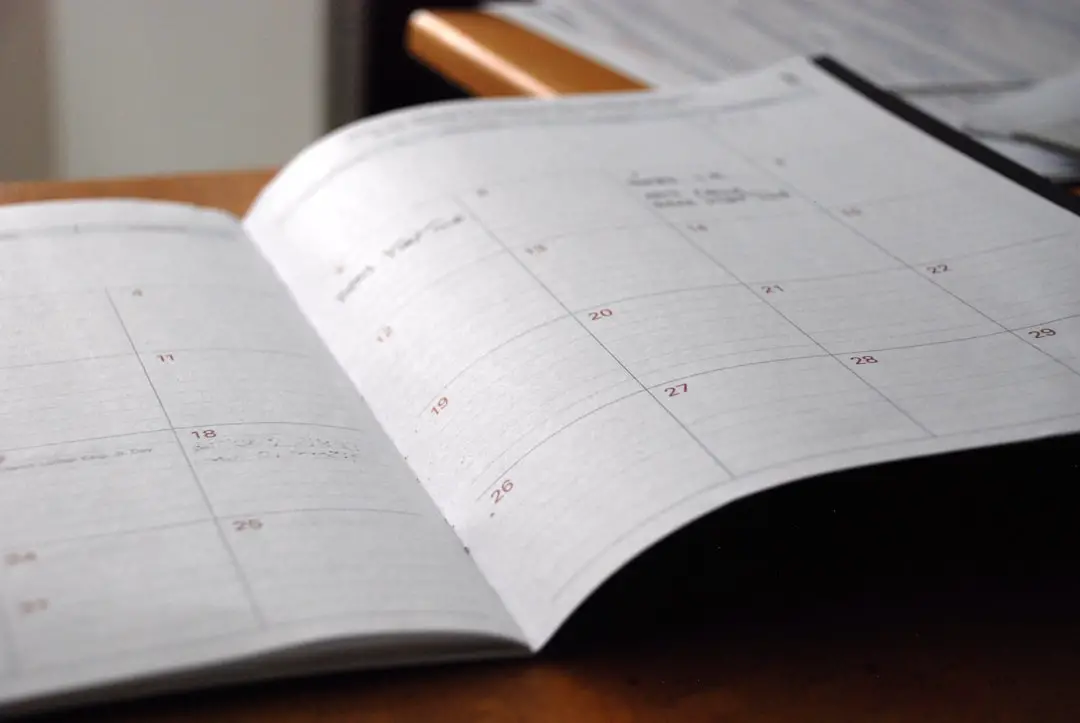Support our educational content for free when you purchase through links on our site. Learn more
12 Must-Know Seasons in Spanish for 2025 🌞❄️🍂🌸
Have you ever found yourself chatting with a Spanish-speaking friend and suddenly stumbled when trying to talk about the seasons? Maybe you knew verano means summer, but what about otoño or those tricky times when you drop the article el or la? Well, buckle up! In this article, we’ll take you on a whirlwind tour of everything you need to know about seasons in Spanish — from vocabulary and pronunciation to fascinating etymology and cultural traditions. Plus, we’ll reveal some insider tips on when to use or skip the definite article, and even throw in some spicy adjectival forms to make your Spanish sparkle! 🌟
Did you know that in many tropical Spanish-speaking countries, the year isn’t divided into four seasons but rather into la estación lluviosa (rainy season) and la estación seca (dry season)? This little nugget is just one of many surprises waiting for you. Ready to impress your amigos and master the seasons like a native? Let’s dive in!
Key Takeaways
- Learn the four main seasons in Spanish: la primavera, el verano, el otoño, and el invierno, plus regional variations like rainy and dry seasons.
- Master when to use the definite article with seasons and when to leave it out for natural-sounding Spanish.
- Discover the Latin roots behind the season names to deepen your language appreciation.
- Use adjectival forms like primaveral and invernal to add flair to your conversations.
- Explore cultural traditions and idioms linked to seasons across Spanish-speaking countries.
- Avoid common mistakes with pronunciation and article usage to speak confidently.
Ready to take your Spanish vocabulary to the next level? Check out these helpful resources:
- 👉 Shop Spanish Vocabulary Books: Amazon | Barnes & Noble
- Try Language Apps: Duolingo | Babbel
- Use Flashcards: Anki
Dive in and let the seasons guide your Spanish learning journey!
Table of Contents
- Quick Tips and Facts About Seasons in Spanish 🌞❄️🍂🌸
- The Fascinating Origins and History of Spanish Season Names 📜
- Mastering the Four Seasons in Spanish: Vocabulary and Pronunciation 🎤
- When to Use the Definite Article with Spanish Seasons: Dos and Don’ts 🧐
- Times You Can Skip the Definite Article: Seasons Without “El” or “La” ❌
- Etymology Deep Dive: Where Do the Spanish Season Names Come From? 🔍
- Adjectival Forms of Seasons in Spanish: Spice Up Your Sentences! 🌶️
- Sample Sentences Using Seasons in Spanish: Real-Life Examples You’ll Love 💬
- Regional Variations: How Seasons Are Talked About Across Spanish-Speaking Countries 🌎
- Seasonal Idioms and Expressions in Spanish: Sayings to Impress Your Amigos! 🗣️
- Teaching Tips: How to Learn and Remember Spanish Seasons Easily 🎓
- Fun Cultural Traditions Linked to Seasons in Spanish-Speaking Countries 🎉
- Common Mistakes Learners Make with Spanish Seasons and How to Avoid Them 🚫
- Conclusion: Wrapping Up Your Journey Through Spanish Seasons 🌈
- Recommended Links for Further Spanish Season Learning 📚
- FAQ: Your Burning Questions About Seasons in Spanish Answered! ❓
- Reference Links: Trusted Sources Behind Our Spanish Seasons Guide 🔗
Quick Tips and Facts About Seasons in Spanish 🌞❄️🍂🌸
To learn about seasons in Spanish, start with the basics: la primavera (spring), el verano (summer), el otoño (autumn), and el invierno (winter). Check out our article on What in Spanish: 8 Essential Ways to Ask Questions! to improve your questioning skills. Understanding the seasons is crucial for Spanish Vocabulary, especially when discussing weather and holidays.
Essential Vocabulary
Here are the seasons in Spanish, along with their translations:
- La primavera — Spring
- El verano — Summer
- El otoño — Autumn or Fall
- El invierno — Winter
Regional Variations
In tropical regions, you might hear about la estación lluviosa (the rainy season) and la estación seca (the dry season). These terms are essential for Spanish Language Learning, as they help you understand local conditions and plan your activities accordingly.
The Fascinating Origins and History of Spanish Season Names 📜

The names of the seasons in Spanish have interesting origins. Invierno comes from the Latin hibernum, primavera relates to primera (first) and ver (to see), verano comes from veranum, and otoño comes from autumnus. For more insights into the etymology of Spanish words, visit our Spanish Language Resources section.
Etymological Insights
Understanding the etymology of season names can deepen your appreciation of the Spanish language. It’s also a great topic for Spanish Conversation Practice, as it allows you to discuss the nuances of language and culture.
Mastering the Four Seasons in Spanish: Vocabulary and Pronunciation 🎤
Mastering the vocabulary and pronunciation of the four seasons in Spanish is straightforward. Remember, la primavera, el verano, el otoño, and el invierno are the key terms. For pronunciation practice, consider listening to native speakers or using language learning apps like Duolingo or Babbel.
Pronunciation Tips
- La primavera is pronounced as “lah pree-mah-VEH-rah”.
- El verano is pronounced as “el vay-RAH-noh”.
- El otoño is pronounced as “el oh-TOH-nyoh”.
- El invierno is pronounced as “el eehn-vee-EHR-noh”.
When to Use the Definite Article with Spanish Seasons: Dos and Don’ts 🧐
The definite article (el or la) is typically used with the seasons in Spanish. For example, la primavera (the spring) and el verano (the summer). However, there are instances where you can omit the definite article, such as after forms of ser and the prepositions en and de. For more on using articles in Spanish, check out our Spanish Vocabulary section.
Using Articles Correctly
- Use the definite article when referring to a specific season: Me encanta la primavera (I love spring).
- Omit the definite article after ser: Es verano (It’s summer).
Times You Can Skip the Definite Article: Seasons Without “El” or “La” ❌
There are times when you can skip the definite article with seasons, such as in phrases like en verano (in summer) or de invierno (of winter). This is an important aspect of Spanish Language Learning, as it helps you sound more natural and fluent.
Omitting the Definite Article
- After prepositions like en (in) and de (of): En verano hace calor (In summer it’s hot).
- After forms of ser: Es otoño (It’s autumn).
Etymology Deep Dive: Where Do the Spanish Season Names Come From? 🔍
Delving into the etymology of Spanish season names reveals their Latin roots. Invierno from hibernum, primavera from primera and ver, verano from veranum, and otoño from autumnus. This etymological knowledge can enhance your Spanish Cultural Insights, providing a deeper understanding of the language and its heritage.
Latin Roots
- Invierno is derived from the Latin hibernum, meaning winter.
- Primavera combines primera (first) and ver (to see), symbolizing the first sight of spring.
- Verano comes from veranum, the Latin word for summer.
- Otoño is derived from autumnus, the Latin term for autumn.
Adjectival Forms of Seasons in Spanish: Spice Up Your Sentences! 🌶️
To add variety to your sentences, use adjectival forms of the seasons. For example, invernal (wintry), primaveral (springlike), veraniego (summery), and otoñal (autumnal). These adjectives can be used to describe weather, landscapes, and even moods. For more on adjectives and how to use them in context, visit our Spanish Vocabulary section.
Adjectival Forms
- Invernal (wintry): El clima invernal es frío (The wintry climate is cold).
- Primaveral (springlike): La decoración es primaveral (The decoration is springlike).
- Veraniego (summery): El traje es veraniego (The suit is summery).
- Otoñal (autumnal): El paisaje otoñal es hermoso (The autumnal landscape is beautiful).
Sample Sentences Using Seasons in Spanish: Real-Life Examples You’ll Love 💬
Using seasons in sentences can make your Spanish more engaging. For example, Me encanta la primavera porque hace sol (I love spring because it’s sunny). Practice with these sentences to improve your Spanish Conversation Practice.
Conversational Examples
- La primavera es mi estación favorita (Spring is my favorite season).
- El verano es ideal para viajar (Summer is ideal for traveling).
- El otoño es hermoso en el parque (Autumn is beautiful in the park).
- El invierno es perfecto para esquiar (Winter is perfect for skiing).
Regional Variations: How Seasons Are Talked About Across Spanish-Speaking Countries 🌎
Different Spanish-speaking countries have unique ways of referring to the seasons. In some tropical regions, the focus is on the rainy and dry seasons. Understanding these variations can enrich your Spanish Cultural Insights, helping you communicate more effectively with people from diverse backgrounds.
Tropical Seasons
- La estación lluviosa (the rainy season) is a common term in tropical areas.
- La estación seca (the dry season) is also widely recognized.
Seasonal Idioms and Expressions in Spanish: Sayings to Impress Your Amigos! 🗣️
Seasonal idioms and expressions can add flavor to your Spanish. For example, tomar el pelo (to tease) is more commonly used in spring, symbolizing the light and playful nature of the season. Explore more idioms and expressions on our Spanish Vocabulary page.
Seasonal Idioms
- Tomar el pelo (to tease) is a spring-inspired idiom.
- Estar en otoño (to be in autumn) can mean to be in a period of decline.
Teaching Tips: How to Learn and Remember Spanish Seasons Easily 🎓
Learning the Spanish seasons can be fun and easy. Start with basic vocabulary, practice pronunciation, and use flashcards or apps like Anki to reinforce your learning. For more teaching tips and resources, visit our Spanish Language Resources section.
Learning Strategies
- Use flashcards to memorize season names and their translations.
- Practice pronunciation with native speakers or language learning apps.
- Watch Spanish videos or TV shows that mention the seasons to improve your listening skills.
Fun Cultural Traditions Linked to Seasons in Spanish-Speaking Countries 🎉
Each season in Spanish-speaking countries is associated with unique cultural traditions. For example, la primavera (spring) is a time for renewal and festivals, while el invierno (winter) is perfect for cozying up with a good book and a warm cup of coffee. Explore these traditions to deepen your Spanish Cultural Insights.
Cultural Traditions
- La primavera is a time for festivals and outdoor activities.
- El verano is ideal for beach vacations and water sports.
- El otoño is a season for harvest festivals and cozying up with warm drinks.
- El invierno is perfect for skiing, reading, and enjoying warm beverages.
Common Mistakes Learners Make with Spanish Seasons and How to Avoid Them 🚫
Common mistakes include incorrect use of the definite article, misunderstanding of regional variations, and difficulty with pronunciation. To avoid these mistakes, practice regularly, focus on correct pronunciation, and learn about regional differences. For more tips on avoiding common mistakes, visit our Spanish Language Learning section.
Avoiding Mistakes
- Practice the correct use of the definite article with seasons.
- Learn about regional variations in season names and traditions.
- Focus on correct pronunciation to improve your fluency.
Conclusion: Wrapping Up Your Journey Through Spanish Seasons 🌈

Wow, what a ride through the vibrant world of seasons in Spanish! From the sunny verano to the cozy invierno, you now have a solid grasp of the vocabulary, pronunciation, and cultural nuances that bring these words to life. Remember, the definite article (el or la) is your trusty companion most of the time, but knowing when to skip it will make your Spanish sound natural and fluent. Plus, those adjectival forms like primaveral and otoñal? They’re your secret sauce for spicing up conversations and writing.
We also uncovered some fascinating etymology, revealing how these season names connect us to Latin roots and centuries of linguistic evolution. And don’t forget the fun cultural traditions and idioms that give each season its unique flavor across Spanish-speaking countries.
If you’ve been wondering how to remember all this or avoid common pitfalls, our teaching tips and examples have you covered. So next time you chat with your amigos or plan a trip to Spain or Latin America, you’ll be ready to talk seasons like a pro!
Keep practicing, stay curious, and let the seasons guide your Spanish learning journey. 🌟
Recommended Links for Further Spanish Season Learning 📚
Ready to dive deeper or grab some handy tools? Check out these top picks:
-
Spanish Vocabulary Books on Amazon:
Spanish Vocabulary for Beginners | Practice Makes Perfect: Spanish Vocabulary -
Flashcard Tools:
Anki -
Spanish Lessons via Skype (BlablaLang):
Learn Spanish Online
FAQ: Your Burning Questions About Seasons in Spanish Answered! ❓

What are the Spanish words for the four seasons?
The four seasons in Spanish are:
- La primavera (spring)
- El verano (summer)
- El otoño (autumn/fall)
- El invierno (winter)
These are the standard terms used across most Spanish-speaking countries, with the definite article (la or el) typically preceding the season name.
How do you say summer in Spanish?
Summer is el verano. It’s masculine, so it takes the article el. For example: El verano es mi estación favorita (Summer is my favorite season).
Read more about “Unlocking Numbers in Spanish: 10 Essential Tips! 🎉”
What is the translation of autumn in Spanish?
Autumn translates to el otoño. It’s also masculine and is often interchangeable with el otoño or el otoño (fall). Both are widely understood, but otoño is the standard term.
Read more about “What in Spanish: 8 Essential Ways to Ask Questions! 🗣️ …”
How do you pronounce the Spanish word for spring?
Spring in Spanish is la primavera, pronounced:
pree-mah-VEH-rah
The stress falls on the penultimate syllable “VEH.” Remember, the “r” is lightly rolled, and the “i” sounds like the “ee” in “see.”
What are the months of each season in Spanish?
Here’s a quick breakdown of months by season in Spain and much of Latin America:
| Season | Months (Spanish) | Months (English) |
|---|---|---|
| Primavera | marzo, abril, mayo | March, April, May |
| Verano | junio, julio, agosto | June, July, August |
| Otoño | septiembre, octubre, noviembre | September, October, November |
| Invierno | diciembre, enero, febrero | December, January, February |
Note: In the Southern Hemisphere (e.g., Argentina, Chile), seasons are reversed.
Read more about “¿Cómo Decir “What Are You Doing?” en Español? 7 Formas Clave (2025) 🔥”
How do you describe the weather in Spanish during different seasons?
Spanish uses verbs like hacer (to make/do) and haber (there is/are) to describe weather. Common phrases include:
- En verano hace calor (In summer, it’s hot)
- En invierno hace frío (In winter, it’s cold)
- En otoño hace fresco (In autumn, it’s cool)
- En primavera hace sol (In spring, it’s sunny)
Other verbs like llover (to rain) and nevar (to snow) are used in their third-person singular forms: llueve (it rains), nieva (it snows).
What are some common Spanish phrases used to talk about the seasons?
Here are a few handy phrases:
- La primavera es hermosa (Spring is beautiful)
- Me gusta el verano porque puedo ir a la playa (I like summer because I can go to the beach)
- El otoño trae colores maravillosos (Autumn brings wonderful colors)
- En invierno, me gusta beber chocolate caliente (In winter, I like to drink hot chocolate)
Using these phrases will help you sound more natural and expressive.
Reference Links: Trusted Sources Behind Our Spanish Seasons Guide 🔗
- ThoughtCo’s detailed article on The Four Seasons in Spanish
- BBC Bitesize’s guide on Weather and Seasons in Spanish
- BlablaLang’s comprehensive overview of Days of the Week, Months, and Seasons in Spanish
- Duolingo Official Website: Duolingo Spanish Course
- Babbel Official Website: Babbel Spanish Courses
- Anki Flashcards: Anki Official Site
For more cultural insights and language resources, visit our Spanish Cultural Insights and Spanish Language Resources sections at Spanish Scholar™.
